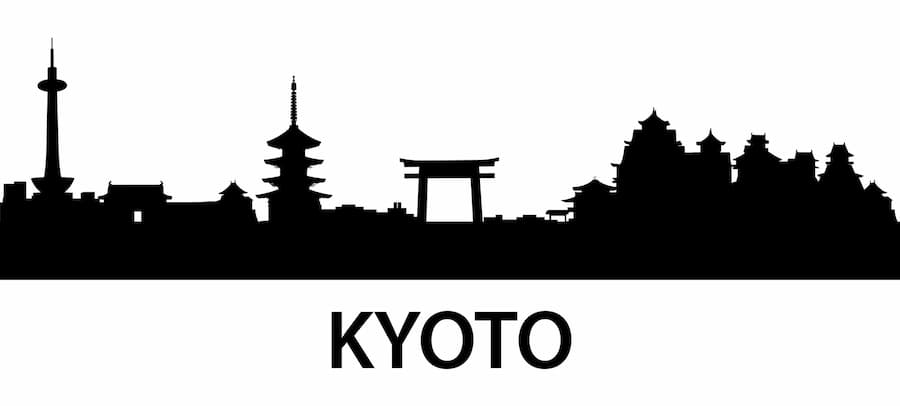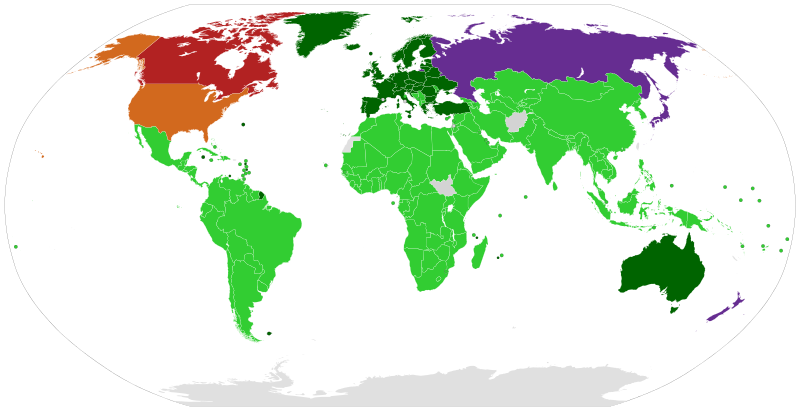The Kyoto Protocol: Pioneering Global Climate Action
The Kyoto Protocol commits industrialized countries to set targets in place that will reduce the amount of greenhouse gas emitted by 5% (on average) over a five year period.
The Basics of the Kyoto Protocol
The goal of the protocol is to successfully lower emissions of six important greenhouse gases:
- nitrous oxide
- carbon dioxide
- sulfur hexafluoride
- methane
- hydrofluorocarbons (HFCs)
- and perfluorocarbons (PFCs)
This protocol establishes the responsibility of industrialized countries to reduce the amount of greenhouse gases they produce annually because they are directly responsible for the elevated levels of these gases in the atmosphere.
Although it is not mandatory, it is considered environmentally responsible to ratify it and those that do not will face consequences with foreign countries.
Moreover, the Kyoto Accord advocates that all industrialized countries have a common yet differentiated responsibility.
Background - A Framework for Global Climate Governance
The Kyoto Protocol, developed during a United Nations conference in Kyoto, Japan, was signed on December 11, 1997, and officially came into force on February 16, 2005. This landmark treaty represented a critical step forward in global efforts to mitigate climate change by establishing legally binding emission reduction targets for developed countries.
Under the Kyoto Protocol, all participating countries are required to submit annual reviews to ensure compliance with the agreement's requirements. These reviews involve detailed monitoring of each country's greenhouse gas emissions, which must be meticulously documented and reported. The protocol mandates that countries maintain comprehensive records of their emissions and the measures taken to reduce them, fostering transparency and accountability.
To facilitate compliance, the Kyoto Protocol includes a registry system that records each transaction related to emission reductions and trading. This system is crucial for verifying that countries are adhering to their commitments and accurately reporting their progress. The registry tracks activities such as emissions trading, where countries can buy and sell emission reduction credits, thus providing flexibility in how they meet their targets.
Moreover, the protocol establishes a compliance system designed to assist countries struggling to meet their emission reduction obligations. This system offers support and guidance, helping nations implement effective policies and measures to achieve their goals. The compliance mechanism ensures that the integrity of the protocol is upheld, promoting global cooperation and mutual assistance.
The Kyoto Protocol's structure and mechanisms reflect a comprehensive approach to international climate governance, emphasizing the importance of monitoring, reporting, and accountability. By setting a precedent for legally binding commitments and creating robust systems for enforcement and support, the Kyoto Protocol has laid the groundwork for subsequent climate agreements and continues to influence global climate policy.
Participants
To date, 189 countries have signed and ratified the Kyoto protocol agreeing to do their part in the reduction of GHG emissions including Austria, Belgium, Canada, China, Cuba, Denmark, Egypt, Finland, France, Germany, Greece, Haiti, Iceland, India, Ireland, Israel, Italy, Japan, Mexico, Morocco, Norway, Poland, South Africa, South Korea, Spain, Sweden, Syria, Tunisia, Turkey, Ukraine, United Kingdom, and Vietnam.
The purpose of the Kyoto accord is to make all countries accountable for the rise in dangerous greenhouse gas emissions that can potentially damage the environment and leave a lasting effect for future generations to come.
Parties; Annex I & II countries with binding targets
Parties; Developing countries without binding targets
States not Party to the Protocol
Signatory country with no intention to ratify the treaty, with no binding targets
Countries that have denounced the Protocol, with no binding targets
Parties with no binding targets in the second period, which previously had targets
Problems and Update
The Kyoto Protocol, an international treaty adopted in 1997, marked a significant step in the global effort to combat climate change by setting legally binding targets for industrialized countries to reduce greenhouse gas emissions. Although no country has formally refused the agreement, many countries, including the United States, have not ratified the treaty. This non-ratification means their participation is voluntary, and they are not legally bound to meet the specific emission reduction targets outlined in the protocol.
Canada is the only country to date that has formally renounced the Kyoto Protocol. In 2011, Canada announced its withdrawal, citing the protocol's limited effectiveness and the economic burden of compliance as reasons for its departure. This move highlighted the challenges of achieving global consensus and the complexities involved in international climate agreements.
In 2009, the protocol was updated with the Copenhagen Accord, an agreement that sought to address some of the shortcomings of the original treaty. The Copenhagen Accord aimed to include a broader range of countries, both developed and developing, in the global effort to reduce emissions. It also introduced new initiatives, such as the creation of the Green Climate Fund, designed to support climate adaptation and mitigation efforts in developing nations. Despite its intentions, the Copenhagen Accord faced criticism for its non-binding nature and lack of specific targets, underscoring the ongoing difficulties in crafting effective and universally accepted climate agreements.
The evolution from the Kyoto Protocol to the Copenhagen Accord reflects the dynamic and often contentious nature of international climate policy. These efforts underscore the need for continued innovation and cooperation in addressing the global challenge of climate change. The legacy of the Kyoto Protocol, with its pioneering framework and ambitious goals, remains a critical foundation upon which future climate agreements can build.
ChatGPT was used to help create this article
Further Reading and Sources
Join the Community and Newsletter (4500 Subscribers)
You can subscribe to my Substack Page or see the archives of previous posts. More great content coming soon!
Recent Articles
-
Quotes on Climate Change
Nov 24, 25 07:29 PM
Here is a list of quotes on climate change divided into different categories, many of which include people you have previously heard of. -
Climate Change Guide
May 09, 25 08:36 PM
The Climate Change Guide is your guide to a more sustainable future, and will provide you with all relevant information on mankind's greatest challenge. -
Laurent Cousineau
May 09, 25 08:23 PM
Here is information about the founder of the website Climate Change Guide, Laurent Cousineau. He created it in August 2011. -
Climate Change Quotes by Scientists Around the World
Aug 24, 24 02:01 PM
Explore impactful climate change quotes by scientists. Discover the wisdom and insights of experts advocating for a sustainable future.









